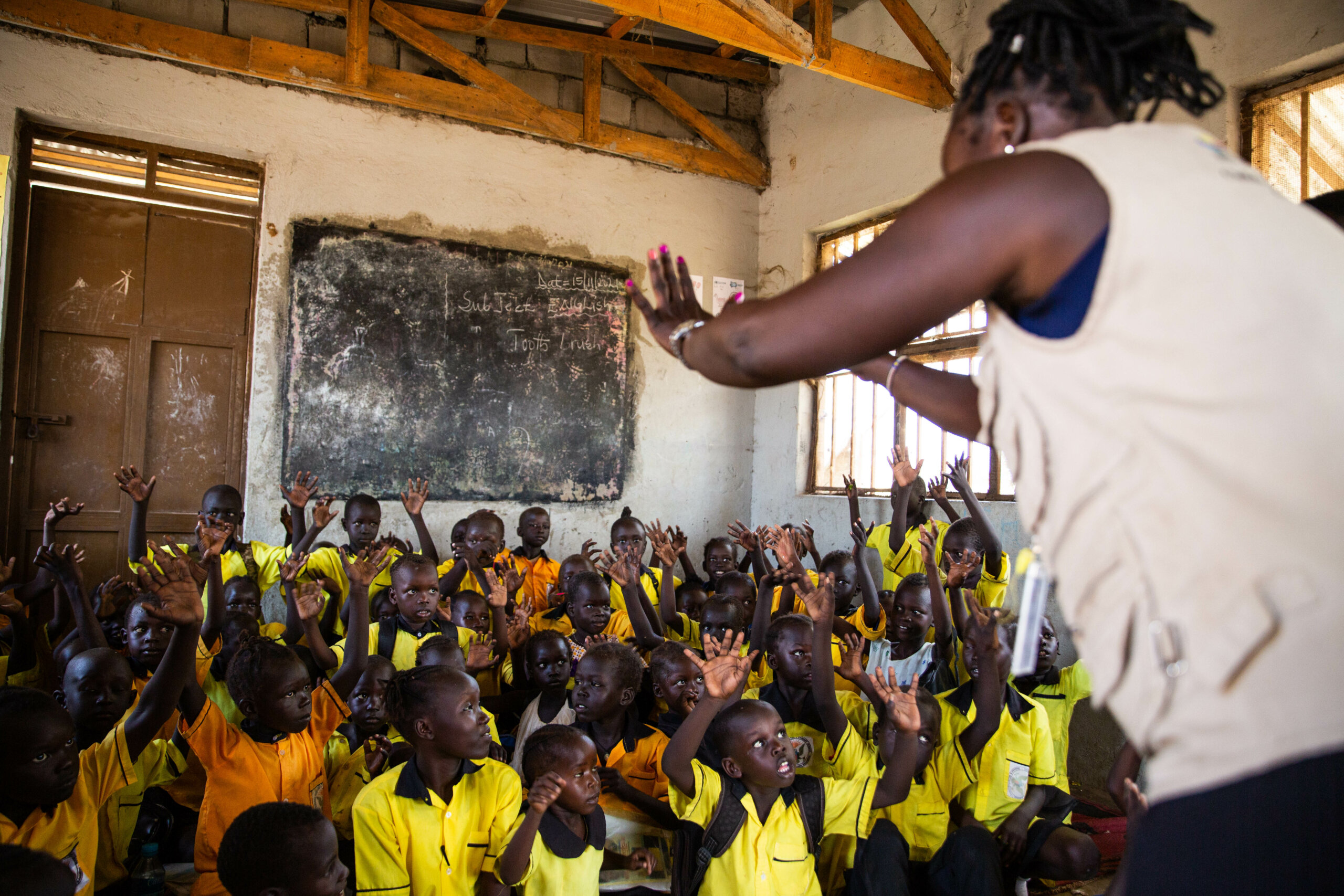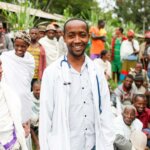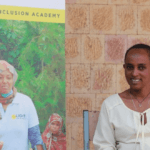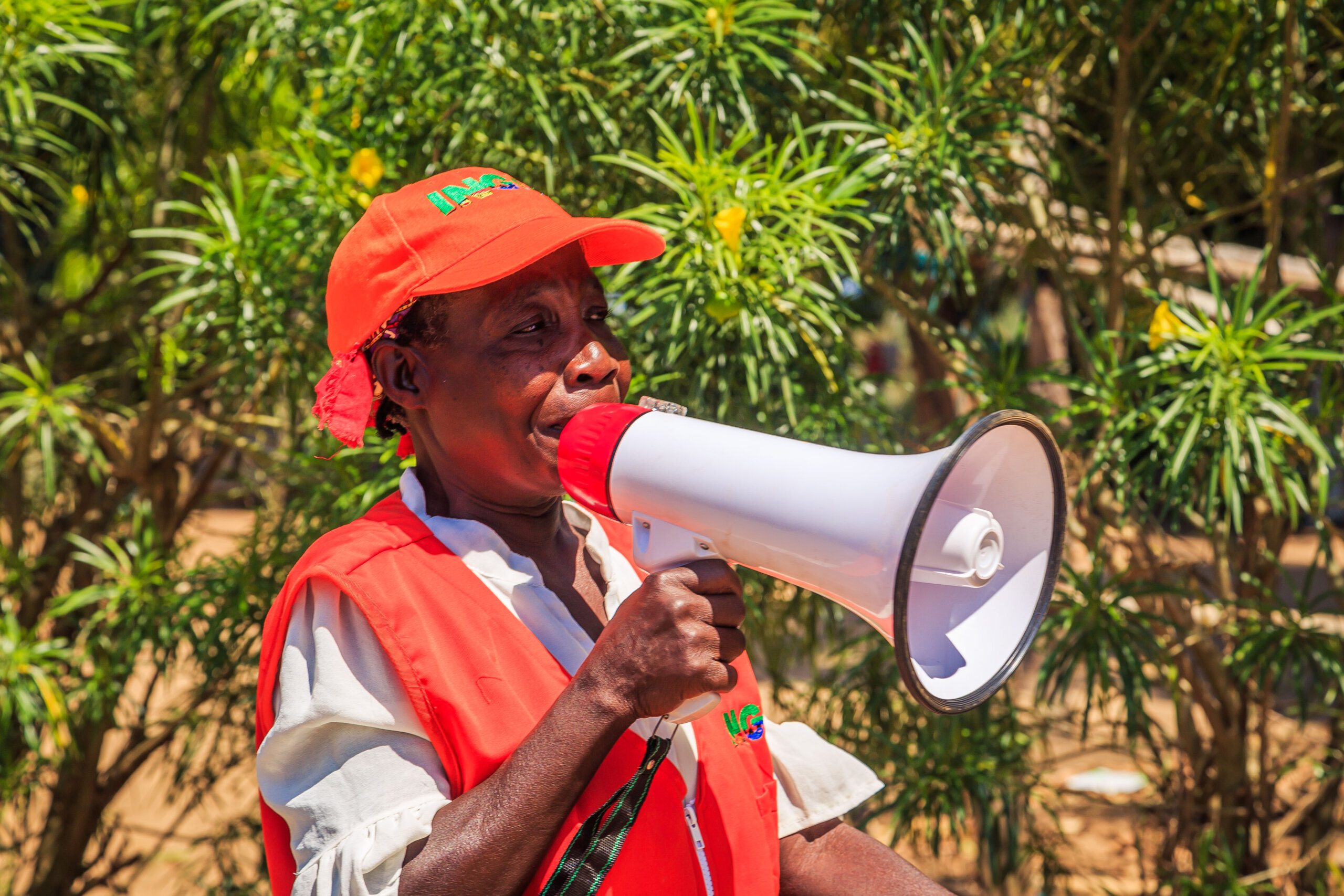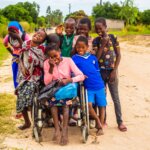- Humanitarian Action
- Inclusive Education
Education Cannot Wait programme is launched to ensure crisis-affected girls and boys in South Sudan have uninterrupted access to inclusive education and safe, quality learning opportunities.
South Sudan can be a challenging place for girls and boys to pursue education, particularly for those with disabilities.
An estimated 2.8 million children were out of school in South Sudan in 2020. Though there has been success in enrolling learners in the earliest grades of education, the drop-off thereafter is steep. In 2021 63 per cent of children were enrolled in primary education, while just 13 per cent were accessing secondary education.
Displacement, conflict, economic instability and social stigma around girls and people with disabilities attending school combine to create multifaceted barriers to education.
“Education in South Sudan remains an urgent priority with just 27 per cent of the population able to read or write, and less than half of children enrolled in school” says Pornpun Jib Rabiltossaporn, Save the Children Country Director.
Mental and psychosocial support, a vital aspect of inclusive education, is also an issue. Despite many learners being impacted by rising insecurity and violence, only 34% of teachers in South Sudan reported training on psychosocial support.
Learners with disabilities in South Sudan face exclusion from education
Exclusion from education systems is particularly apparent among children with disabilities, especially girls. School communities are generally not sensitised to the need to create enabling environments for girls and boys with disabilities.
“Children with disabilities face many layered barriers to accessing quality education. Social stigma around disability, along with inaccessibility of learning spaces, prevents girls and boys with disabilities from attending school,” says Sophia Mohammed, country director of Light for the World South Sudan.
“South Sudan also has an under-resourced and underqualified teaching force. The rate of turnover is high, and the teaching force is also largely male.”
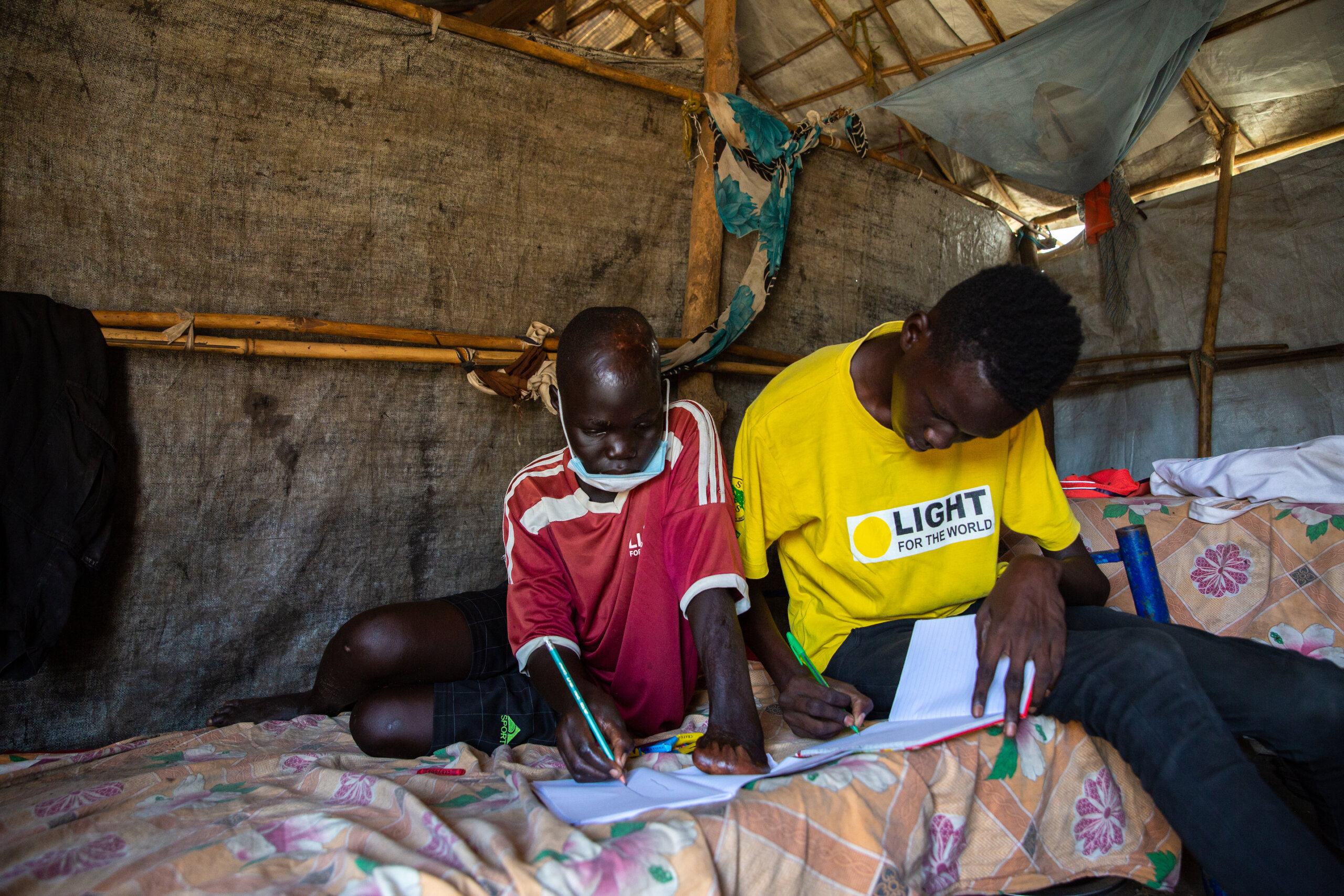
Girls with and without disabilities are among the most affected
Girls represent just 40 per cent of primary school learners in South Sudan, dropping to 31 per cent at the secondary level. A 2022 Oxfam study revealed that the rate with which girls drop out of education has a significant relationship with existing cultural norms and traditional practices.
Send your girls to school rather than booking them for marriage!
Hon. Minister Awut Deng Achuil, Ministry of General Education and Instruction, South Sudan
“Girls and adolescent girls face extreme barriers to pursuing their education, especially those with disabilities,” says Sophia.
“Early and forced marriage, ‘booking’ of girls as young as eight for marriage, abduction of girls and community stigma are just some of the factors that prevent girls from accessing inclusive education in South Sudan. The objective is to ensure girls have equal access to education while boys and men become advocates for, not obstacles to, equitable education for all.”
Education Cannot Wait: Inclusive Education in South Sudan
Light for the World has partnered with Save the Children, Plan International, UNESCO, and grantees, the Norwegian Refugee Council and Finn Church Aid, to provide safe and inclusive education to crisis-affected learners across fourteen counties in South Sudan, funded by Education Cannot Wait in a multi-year resilience programme.
“Education Cannot Wait strives to ensure that children in all their diversity, including those with disabilities, who are reached through its programmes, access inclusive and equitable quality education and learn on an equal basis with others in accessible, safe and protected teaching and learning environments” says Yasmine Sherif, Executive Director of Education Cannot Wait, the United Nations global fund for education in emergencies and protracted crises.
The goal is to tackle barriers to inclusive learning, with Light for the World providing technical expertise for disability inclusion. Enabling children with disabilities and girls with and without disabilities to attend school is the priority, with the aim of reaching 135,000 learners, particularly returnees and internally displaced people (IDPs) – including those who have fled the ongoing armed conflict in Sudan.
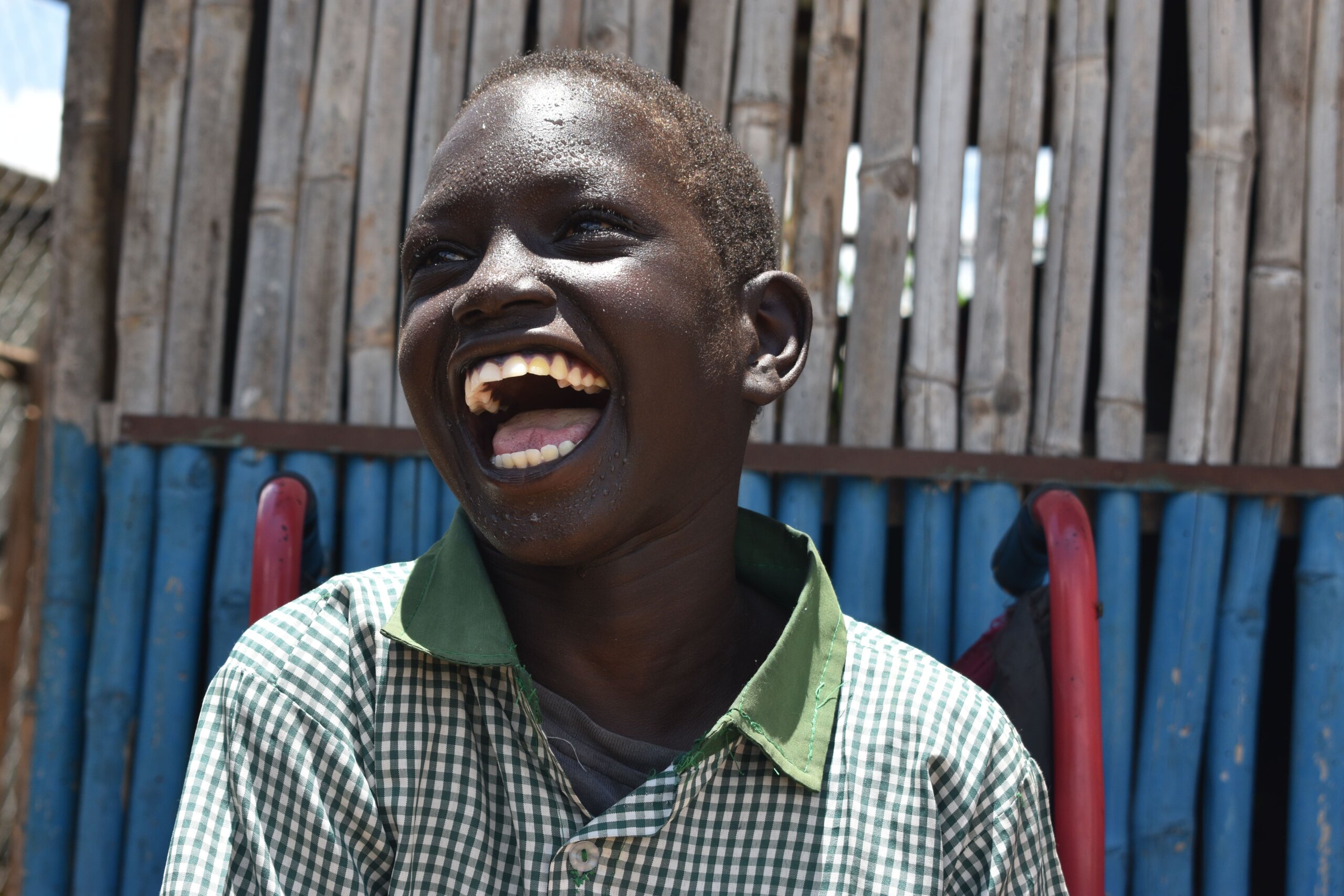
Over the next three years, construction of safe and accessible learning spaces – with mobility support and inclusive enrolment processes – will help to ensure equitable, gender responsive, and uninterrupted access to quality learning opportunities for crisis-affected girls and boys, including those with disabilities.
Mobilisation campaigns throughout South Sudan will address the stigmas that act as barriers to education on a community level. Similarly, provision of menstrual hygiene kits and inclusive education interventions on sexual and gender-based violence – at a community level – will remove some of the obstacles to attend school, especially for girls.
We need to ensure that children have a conducive environment at home and in their community, for them to develop to their fullest potential – so awareness-raising and social behavioural change at all levels is key.
Nafisa Baboo, director of Inclusive Education at Light for the World
Train the teachers on Inclusive Education
Teacher training and encouraging recruitment of female teachers will ensure quality of teaching and learning is improved in crisis-affected communities. This training will offer teachers practical inclusive education skills, enabling them to educate learners to understand and advocate for their own rights.
By involving communities, education authorities, teachers and students, the programme aims to strengthen the education system in South Sudan. The goal is for education in South Sudan to become more responsive to the impacts of crisis, whilst ensuring resilience of teachers and learners through increased mental health and psychosocial support.
“This multiyear project shows that disability inclusion is not a request but a requirement. Thank you Education Cannot Wait” says Sophia.
How does Light for the World promote inclusive education in South Sudan?
Find out more about Light for the World’s work in South Sudan and promoting Inclusive Education.
